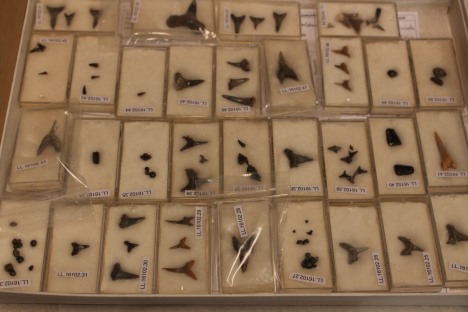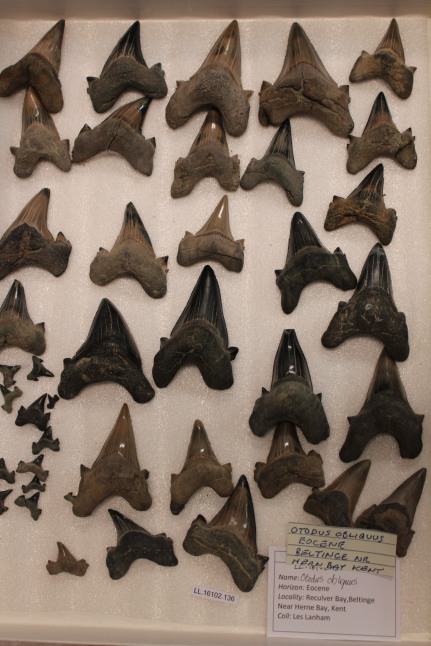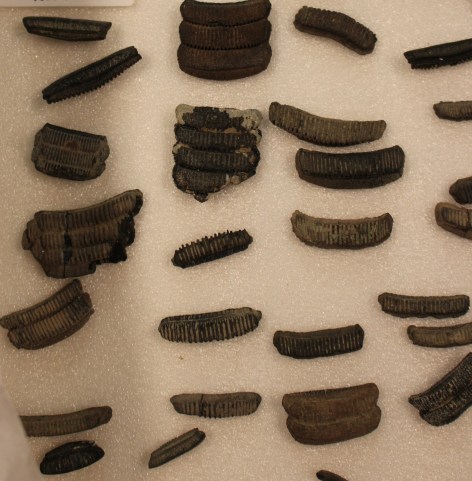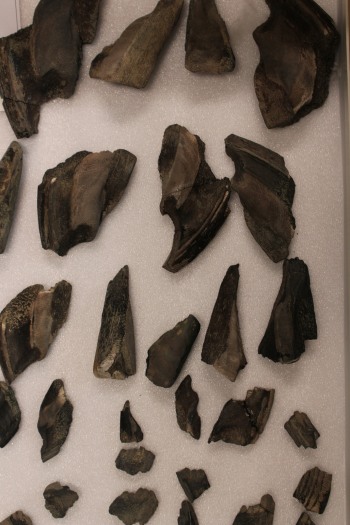
A fantastic collection of Shark, Ray and Chimaeroid teeth have recently been donated to the museum. The fossils are from the Eocene period, 53- 36 million years ago. Most of the fossils were collected from Reculver Bay and Herne Bay in Kent.
Sharks, rays and chimaeroids all belong to the well-established group known as Chondrichthyes or cartilaginous fishes.
These fishes have a skeleton of firm elastic tissue or cartilage rather than bone. Cartilage is flexible and durable yet is half the normal density of bone.
Sharks

Otodus obliquus
The existence of sharks extends back in time approximately 400 million years to the upper Devonian period.
The ancestors of modern sharks were the Placoderm group which through evolution had adapted the dermal denticals (scales) for use as primitive teeth.
Sharks have been successful over millions of years due to their ability to adapt to almost any feeding condition. Sharks have multiple rows of teeth which are constantly replaced throughout its lifetime.
Teeth are often the only part of the shark to be preserved so differences in teeth are the most important means of identifying fossil species.
Rays

Myliobatis sp.
Rays feed on molluscs and crustaceans; they have tooth plates to crush shells. Although Manta ray, feed on plankton.
Their teeth grow constantly and old or worn teeth are discarded through the mouth or sometimes swallowed and partly digested in the stomach.
Chimaeras

Elasmodus hunteri
Chimaeriformes are an order of cartilaginous fishes, informally named rabbit fish; they are cousins of rays and sharks. They feed on molluscs and have six permanent grinding tooth plates to crush their food.
Reference
Kemp, D.J. (1977) A brief illustrated account of the English Eocene Shark and Ray fossils. Gosport Museum.
Filed under: Uncategorized |




[…] Petts graces the PalaeoManchester blog with beautiful sharks teeth (I’m not biased) (that might be a lie) as she introduces us […]